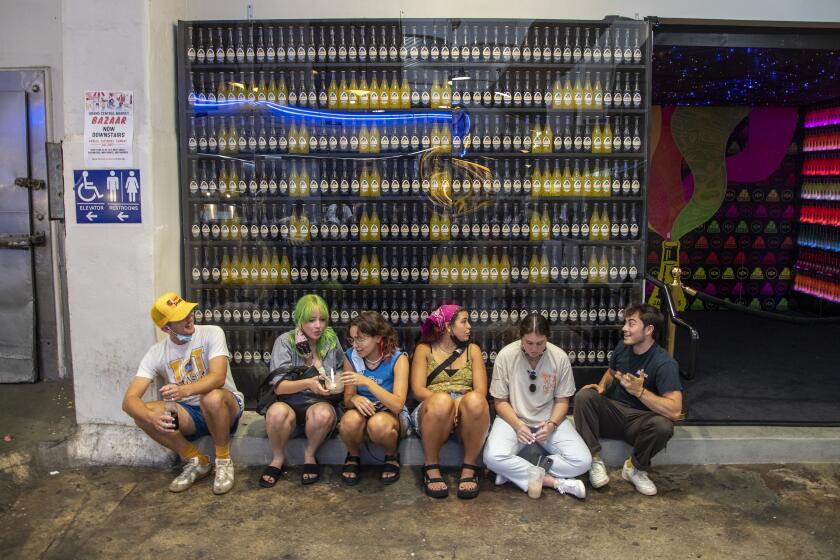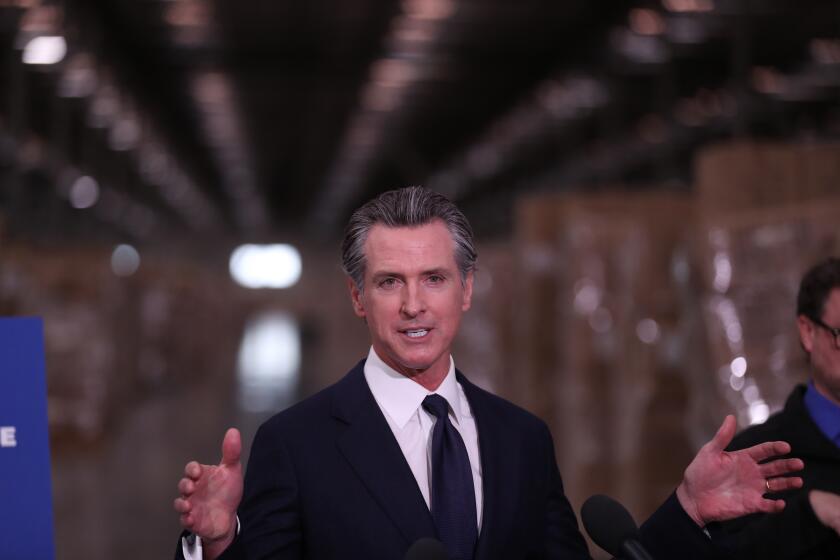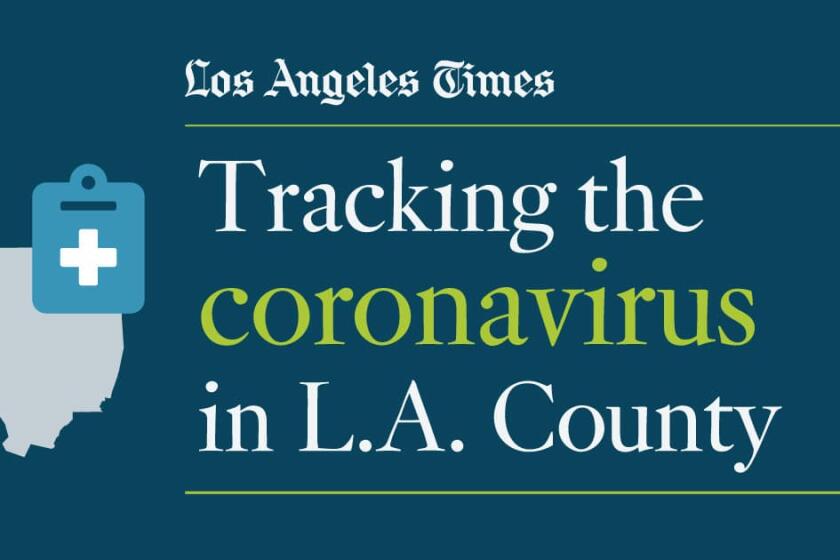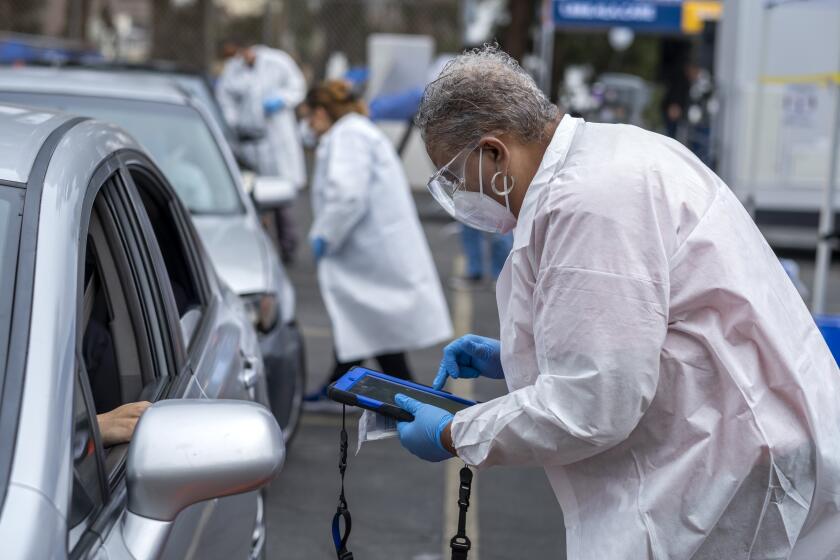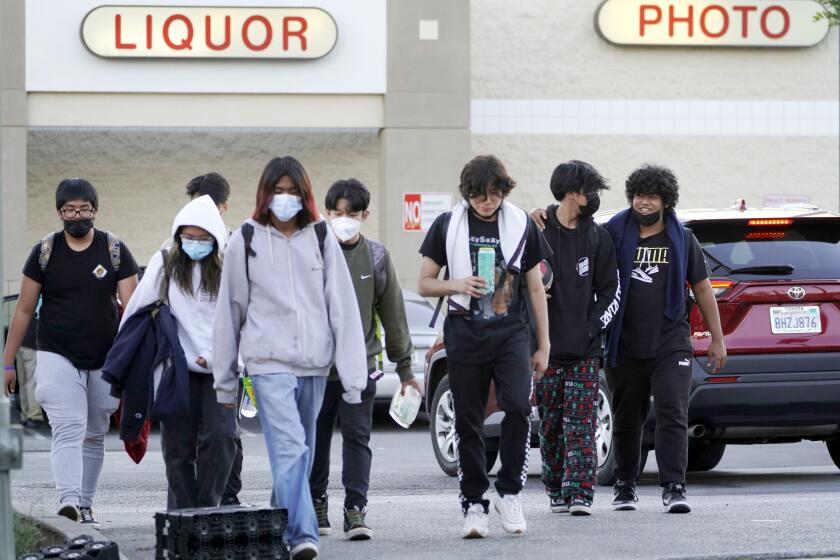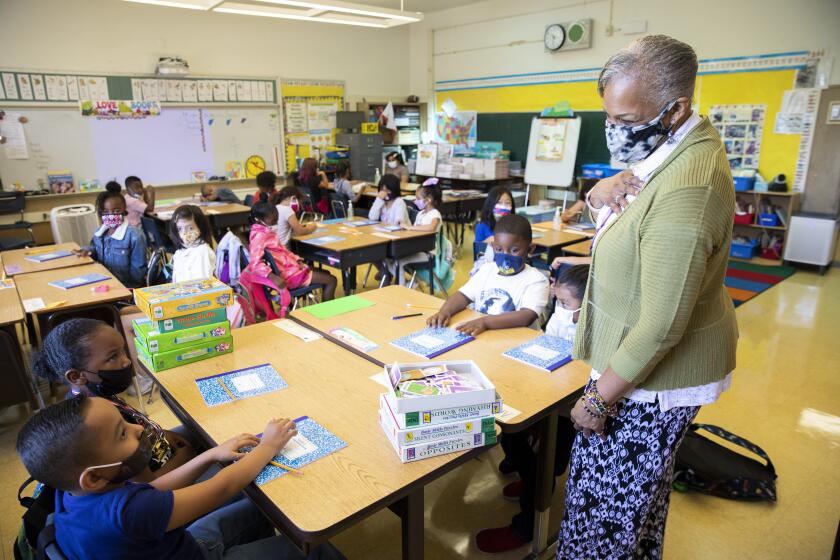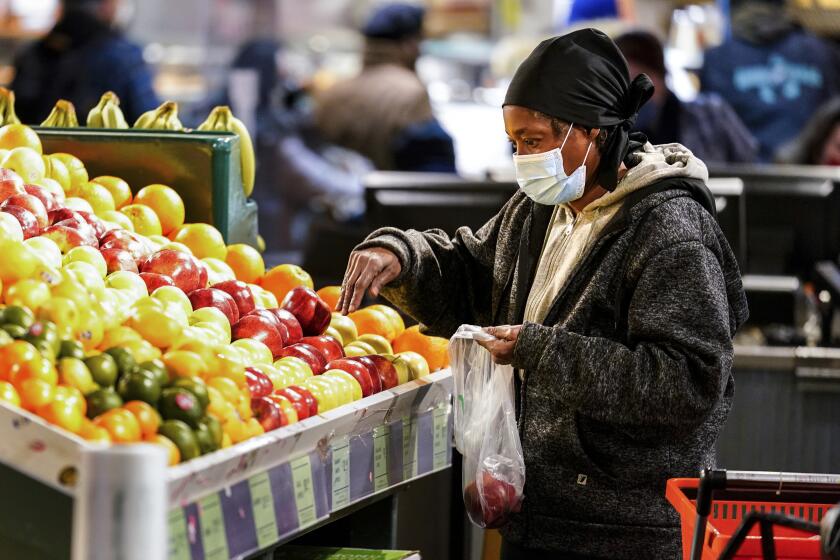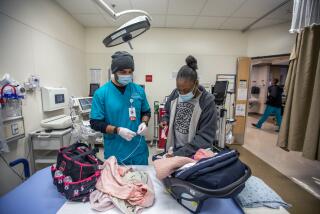California to lift school mask mandate after March 11
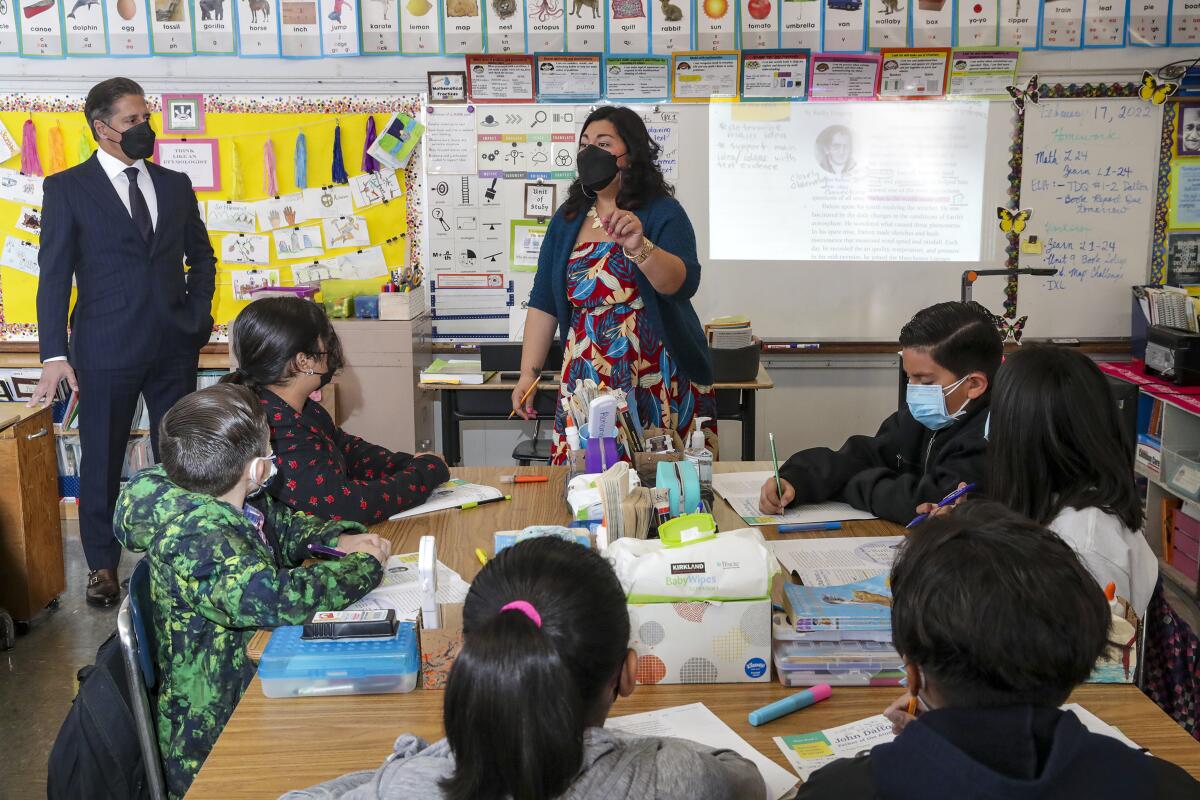
Indoor masking will no longer be mandatory at California schools and child-care facilities after March 11, a long-debated and much-anticipated move that comes as the state continues its steady emergence from the Omicron wave of COVID-19.
Though Monday’s announcement is just the latest move to loosen California’s formerly strict face-covering policies, it may wind up being the most significant in the near term — allowing potentially millions of K-12 schoolchildren to go maskless in the classroom for the first time in at least 10 months.
In another major move, California officials also said masks will be strongly recommended — but no longer required — for unvaccinated individuals in most indoor settings starting Tuesday.
“Today is an important day for California, one that is driven by the data and the science,” said Dr. Mark Ghaly, California’s health and human services secretary.
But, he added during a briefing call with reporters, the new guidance may “be received with some trepidation, and acknowledging that and giving communities time and space to make decisions based on the thoughtful listening that I know will occur is very important.”
The CDC has eased its guidance on when people should wear masks in public indoor settings, but still recommends them in L.A. County.
Even with the state’s action, local officials retain the option of keeping mask rules in place if they think doing so is warranted, and more than 1,000 school districts face making their own decisions on when to take that step — contingent on county health orders and labor agreements.
Los Angeles Unified, the state’s largest school system, appears bound by an agreement with its teachers union to require masking at least through the end of the current school year. But district officials could, if they wish, bring the matter back to the bargaining table.
Whether to send kids to school without masks is as much a matter of personal beliefs as it is policy. While heated online discourse and in-person protests at campuses and school board meetings have perhaps painted the picture that California parents are universally ready to move away from mandatory masking, the reality is less clear, according to the findings of an early February poll conducted by the UC Berkeley Institute of Governmental Studies and co-sponsored by The Times.
In that poll of nearly 9,000 California voters, nearly two-thirds, including a majority of parents, were supportive of mask mandates in K-12 schools.
The poll suggests broad public support for policies aimed at reducing the spread of the coronavirus in schools, even as protests against mask and vaccine mandates garner attention.
Nevertheless, the decision to move from required to “strongly recommended” masking in schools underscores the progress California has made in turning the tide of the latest COVID-19 wave — and illustrates a wider evolution in the state’s thinking as the pandemic shifts from a constant emergency to a less-disruptive burden that can be more realistically managed.
“California continues to adjust our policies based on the latest data and science, applying what we’ve learned over the past two years to guide our response to the pandemic,” Gov. Gavin Newsom said in a statement Monday. “Masks are an effective tool to minimize spread of the virus and future variants, especially when transmission rates are high. We cannot predict the future of the virus, but we are better prepared for it and will continue to take measures rooted in science to keep California moving forward.”
California is something of an outlier in the U.S. on school masking mandates, according to a tracker maintained by Burbio, a media company that aggregates data.
Before Monday’s announcement, California and Hawaii were alone in maintaining indoor mask mandates at schools. In five other states, a relaxing of mask mandates had not yet taken effect, including Washington and Oregon, whose governors joined Newsom on Monday in announcing updated masking rules.
The majority of states provide local officials flexibility in making decisions on school masking. Three states have successfully banned school-based mandates, while eight others are in legal limbo over the issue.
At least a few California school districts have recently opted to defy the state’s existing masking policy. State officials have not appeared eager to respond with sanctions, but insurance carriers have notified local officials that they could assume costly legal risks if their school systems are out of compliance with state rules.
The governor’s office summarized 19 provisions in executive orders that will be immediately terminated, including requirements that all state-owned properties be made available for emergency use.
Masks have long been the most visible hallmark of California’s pandemic response, and widespread requirements to don them in indoor or crowded settings have been both a source of comfort for the COVID-cautious and a target of fierce derision by critics.
But in an environment in which coronavirus transmission is falling rapidly and so many people have at least some degree of protection because they’ve been vaccinated, officials are increasingly saying that the extra layer of protection — though still beneficial — doesn’t necessarily need to be compulsory.
As far as the timing for schools is concerned, Ghaly noted that California’s pandemic metrics are improving steadily and could be in substantially better shape even by the end of next week.
“We see ourselves getting even lower, creating even less likelihood for community and, frankly, school transmissions — and that is key,” he said. “If we can cut transmission rates by 25% or even 50% more in the next 11 or so days, that creates an even lower risk of individuals, masked or unmasked, getting infected in schools.”
The latest maps and charts on the spread of COVID-19 in Los Angeles County, including cases, deaths, closures and restrictions.
When asked specifically why the state is waiting longer to relax mask rules in schools than in other settings, Ghaly pointed out that while families may be able to choose what sort of venues to attend or businesses to patronize, they often don’t have the same flexibility with schools.
“They go to school because that’s the school in their neighborhood. That’s the school they’re assigned to. That’s the school where they get essential services, developmental services, access to food,” he said. “And so we have all along treated schools a little bit differently.”
It may be optimal for some people 12 and older to space out their first and second shots by eight weeks — especially for males ages 12 to 39 — the federal agency says.
When other masking rules are lifted Tuesday for unvaccinated Californians in certain indoor settings, face coverings will still be required for everyone in places identified by the state or federal government — such as on public transportation or in healthcare settings, correctional facilities, and emergency or homeless shelters.
State officials note that local health jurisdictions will still be able to keep more restrictive rules on their books. But how many ultimately choose to do so remains an open question.
California’s move earlier this month to lift a universal indoor face covering mandate put in place to thwart the charge of Omicron was widely adopted. Only a handful of counties and cities chose not to immediately follow the state’s lead in allowing vaccinated people to go maskless in indoor public settings.
The holdouts included Santa Clara and Los Angeles counties, respectively the most populous regions of Northern and Southern California. Though Santa Clara is poised to relax its indoor masking rules as soon as Wednesday, L.A. County may still be weeks away from doing the same.
L.A. County health officials initially said they would lift the local requirement for vaccinated people after the region reached “moderate transmission” as defined by the U.S. Centers for Disease Control and Prevention and remained there for seven days. That would mean recording fewer than 730 new coronavirus cases a day over a weekly period.
Even though there may no longer be a mask mandate, experts say it still makes sense to wear them inside because they offer strong protection.
But the CDC on Friday relaxed its own guidance, shifting away from a system centered on coronavirus case and testing positivity rates to a set of criteria that also take into account COVID-19’s impact on hospitals.
Under this new framework, the CDC recommends universal indoor masking only in areas where the COVID-19 community level is considered to be high. Based on metrics from last week, L.A. County falls within that category, but more recent data indicate the county could soon be reclassified into the medium or low level.
Voters and parents say education suffered during the pandemic and, for the moment at least, their confidence in public schools is shaken, according to a poll.
According to information released by the CDC, the shift to using hospitalization-based metrics as well as case rates is reflective of the higher levels of community immunity to COVID-19 — particularly given the widespread administration of vaccinations and the availability of boosters.
“Community measures should focus on minimizing the impact of severe COVID-19 illness on health and society,” the CDC said in a slide presentation, “preventing medically significant illness, minimizing burden on the healthcare system, [and] protecting the most vulnerable through vaccines, therapeutics and COVID-19 prevention.”
But the CDC suggested that health officials use local data — such as vaccination rates and the findings of wastewater surveillance — to help determine their own recommended prevention measures.
U.S. officials say most Americans live in places where healthy people no longer must wear masks. But they’re still required on public transit.
Though the fate of local masking rules remains somewhat up in the air — health officials have said they plan to present additional information at Tuesday’s Board of Supervisors meeting — the L.A. County Department of Public Health did say Monday it would align its school masking measures with the state.
Some experts are continuing to recommend universal masking even after the CDC’s announcement, citing the fact that the youngest children are still not eligible for the vaccination and the need to provide additional protection for immunocompromised residents.
“Although masks may no longer be required indoors in many parts of the U.S., we know that wearing a well-fitted mask is an effective way to protect ourselves and our communities, including the most vulnerable, from COVID-19 — particularly in indoor settings when physical distancing is not possible,” Dr. Gerald Harmon, president of the American Medical Assn., said in a statement.
Times staff writer John Myers contributed to this report.
More to Read
Start your day right
Sign up for Essential California for news, features and recommendations from the L.A. Times and beyond in your inbox six days a week.
You may occasionally receive promotional content from the Los Angeles Times.
